I tested two tools for cracking the code on Substack Notes
Both solutions were developed by independent developers who are also active on (and good at) Notes.
Disclosure: This post was written by me, lightly edited by Claude, and reviewed by the owners of both featured tools before publication. I’m not an affiliate for either product. The links in this article are just normal links.
When I first joined Substack, a little over a month ago, I was confused when the settings page asked if I wanted to include a “Notes” tab on my website. Articles, videos, and podcasts were pretty self-explanatory. But what the heck are Notes, I wondered. I Googled them, realized they were a sort of Twitter light, and ignored them for a week. Instead, I focused on posting articles, which is what Substack is mostly known for.
For a week or so, I posted every couple of days and…crickets. Each article had about 10-20 views, better than my lightly trafficked, SEO-resistant blog, but not exactly what I was hoping for. So this time, I searched for, “How can I gain visibility on Substack if I don’t have a big email list or social media presence?” and the answer, according to many, many people, was Notes.
My first attempt at posting Notes
I started posting Notes two, three, or even four times a day, sharing my various experiments with and thoughts about AI. I kept this up for about a week and, hoping to enjoy some time offline, I looked into adding Notes to my Buffer account. It would be really convenient, I thought, if I could schedule Notes in advance.
I was also interested in better understanding how different Notes performed and teasing out exactly what my small audience would like to hear about most. I wanted to know:
When is the best time to post Notes?
How many times a day should I publish?
Who is engaging with my Notes?
What do viral Notes have in common?
These are all questions that I've answered for other platforms using basic social media management tools. Unfortunately, I discovered that neither Buffer nor any of the best-known social media planning tools support Notes scheduling.
The good news is that I wasn't out of luck, after all. If you're looking to schedule Notes and track performance, two tools built by active Substackers can help: WriteStack (by
) and Substack Pro Studio (by , currently in beta).Even better, both of these folks are friendly, accessible, and incredibly responsive to questions about their software. (They also write honestly about what it’s like to build and market software as a solopreneur. If you're an aspiring builder, I highly recommend following them both!)
WriteStack: Notes scheduling and analysis, mostly delivered as a service
I first came across WriteStack, a SaaS product that appeared to have grown organically through word-of-mouth in the Substack community, while browsing Substack Notes. When I checked out the landing page, the feature set looked good, and I noticed that the testimonials section included writers from a few of my favorite Substack publications.
After asking Orel a couple of questions over DMs, I was ready to sign up for the free trial.
Onboarding with a quick newsletter analysis
Getting started was overall quick and easy. I signed up with my agency email account, and connected my newsletter, which involved a brief publication analysis. Probably because my account was new and didn't include a lot of posts, the initial publication analysis took less than 30 seconds or so. But if you have an established publication, this might take a few minutes or more.
Scheduling offered as a Chrome plugin
While WriteStack is set up and billed as a SaaS, it does require you to download a Google Chrome plugin to manage the Notes scheduling. I assume this is because Substack does not currently offer an official API.
Once the plugin is installed, the scheduling interface is clean and easy to use. It generates a default schedule of three times a day, picking times when Notes users are most likely to engage. You can easily schedule and unschedule Notes and drag-and-drop them to reschedule. The tool keeps track of drafts, published Notes, and scheduled Notes.
Overall, the experience is very similar to Buffer and to other similar tools. The only glitch I noticed was Notes occasionally not being published when my computer fell asleep or I logged out of Substack; these issues, however, are common to virtually all Chrome plugins.
Automating Notes generation with AI
While I'm a big believer in doing the vast majority of my writing myself, and indeed most of my most successful Notes have been stray thoughts randomly pecked out on my phone, I did try out WriteStack's AI-powered Notes generator. You can run it three ways—you can upload files with your content, ask it to draw from up to three published articles or have it generate ideas based on your publication analysis.
Overall, its performance was typical of AI in general. Maybe one out of ten times it would come up with an interesting angle or a glimpse of an idea that could be built upon. But most of the time, the synthetic Notes missed important context or nuance.
New: Performance analysis, ideas, and Notes generation through chat
As of August 25, WriteStack users can also access performance analysis, idea generation, and Notes generation through a GPT-style chat interface. You just pick the option you want, no prompting required. I tried all three.
The idea generator produced plausible ideas based on my past articles, and would probably do even better if it had more than a month of data to work with. The Notes generator is much better than the one built into the scheduler. It mimicked my writing style surprisingly well, and all the Notes it produced were close to usable as-is.
My only quibble is that they were a bit over-fitted to my past content. However, again, this would probably not be a problem for someone who has a few months of data to work with.
Finally, the performance analysis was thoughtful and coherent, but did not dig much deeper than what I could have gleaned from simply eyeballing the engagement on all of my articles.
Finding viral inspiration
Perhaps more interesting than the automated Notes generation is the collection of viral Notes that WriteStack recommends based on the subject matter you typically write about (which in my case, is AI and related technologies). I find it interesting to check what kinds of content are performing well and what news people are talking about.
Notes performance info all in one place
Perhaps the most annoying thing about how Substack presents its Notes analytics is that you have to click on a link in each individual note to see how many subscribers it helped you add.
WriteStack fixes this issue and lets you see all your Notes on one screen, ordered by performance. This feature has allowed me to get a better idea of what kinds of content my audience engages with and has helped me shape my approach to Notes content over time. This feature alone, in my opinion, is worth the entire subscription price.
Notes streak tracking
WriteStack also provides a neat consistency tracker so you can see how often you've published and how long your daily Notes writing streak has lasted.
In a nutshell
WriteStack is an easy-to-use, service-based solution for Substack Notes scheduling and analytics. While it requires a Chrome extension and monthly subscription, it offers comprehensive features including performance tracking, viral content inspiration, and AI-assisted content generation. The UI is clean, intuitive, and uncluttered. The analytics alone make it worthwhile for serious Substack creators who want to optimize their Notes strategy.
Substack Pro Studio: An advanced Chrome plugin for a single flat fee
While I've been very happy with WriteStack and its pricing is very reasonable, I also have a second Substack account, a fiction and poetry newsletter that I run just for fun. Rather than purchase a second subscription, I thought I’d take the opportunity to test out another tool…ideally one that doesn’t require a recurring payment.
I found out about Substack Notes Studio Pro, a Chrome plug-in with Notes creation and analytic tools, in a group chat, and basically invited myself to the beta program. Finn was gracious enough to share the latest version.
Setup requires a few extra steps
Unlike WriteStack's streamlined onboarding, Studio Pro requires a bit more manual setup:
Download a zip file
Unzip the extension files
Go to chrome://extensions/
Click "Load unpacked" and select the folder
The process is straightforward if you follow the instructions.
Because I’m attempting to automate Notes for two different Substack accounts at the same time, I installed the extension on the Brave browser instead of Chrome, to avoid conflicts with WriteStack’s plug-in.
Fortunately, the instructions work exactly the same on Brave. Instead of going to the Chrome URL, I went to brave://extensions/, turned on developer mode, and loaded the unpacked folder.
Support for intelligent content planning
When posting Notes, it’s generally better to focus on a handful of well-defined, complementary themes, rather than continually repeating the same thing (which can bore your audience) or posting completely at random (which, admittedly, I have done).
One standout feature is the ability to assign color-coded themes to your Notes, so you can see your content mix at a glance and also set scheduling goals for different topics. This makes it easy to ensure you're maintaining variety in your posting topics.
AI-generated Notes that actually work
I was initially skeptical about the AI writing assistant feature, which involves adapting a prompt, running it through ChatGPT and then importing the AI-generated Notes back into the tool. But I put my reservations aside and followed the instructions to the letter.
The results were shockingly good, right out of the box. While they didn't exactly match my personal writing style, by tweaking the prompt slightly, I can see getting genuinely usable content from the start. I'm excited to experiment with this further; it could be a huge time saver.
I was also impressed that all my generated Notes were successfully (and automatically) pulled into the scheduler. The themes were also automatically tagged, which should be a huge time-saver.
Prompt library
Pro Studio also comes with multiple prompt templates, including a Notes Analysis template for understanding why some Notes work and others don’t, and a Notes Repurposing template for creating fresh content based on high-performing Notes. In one experiment, Notes produced by this template were associated with 24% fee subscriber growth month-over-month.
You can also store your own custom prompts in Pro Studio and use them with Notes performance data you export and your own LLM.
Drag-and-drop scheduling
Once AI-generated Notes (other Notes you have written yourself) have been bulk-imported, you can use the Kanban view to drag-and-drop them into time slots. The color coding makes it easy to make sure you’re scheduling a nice variety of posts.
Deconstructing Notes performance
Pro Studio provides detailed analytics including engagement patterns and optimal posting times. When you choose the “Substack Sync” button on the analytics dashboard, you can pull in all your past Notes for a detailed analysis that can help you identify which Notes are contributing most to your account’s growth.
Finding the best time to post
The tool analyzes your historical performance to suggest optimal posting windows based on when you’re most likely to see engagement. You can use these recommended posting windows to build a custom schedule.
Import, export, and instant sync
If you reuse content across multiple platforms, Pro Studio makes it easy to import and export Notes to and from tools like Airtable, Google Sheets, Notion, etc. You can also export Notes performance data and analytics into a CSV file for additional analysis. And you can update the tool with your latest Substack performance data by clicking on the Sync button.
In a nutshell
Substack Pro Studio gives users who don’t mind a less automated experience the ability to create custom schedules, deeply understand Notes performance, and rapidly create Notes using a highly effective prompt plus a bulk upload feature. While the UI is not always intuitive, the product comes with extensive documentation; I was able to get started without once needing to DM for support.
How the tools stack up
If you need to schedule Notes and analyze their performance, both WriteStack and Substack Pro Studio will get the job done.
WriteStack is perfect if you want a clean and simple solution requiring minimal setup and virtually no effort. It's ideal for creators who want to schedule Notes and view their performance at a glance. And the AI chat is a nice bonus if you need ideas or help writing Notes. The viral content inspiration and top Notes card view make it excellent for growing your audience systematically.
Substack Pro Studio appeals to creators who want greater customization, potentially deeper analysis, and don't mind a steeper learning curve. The surprisingly effective AI-generated Notes and bulk upload feature, plus its built-in theme management, make it powerful for content planning. Its data import/export also makes it great if you need to integrate with other tools.
Whichever way you go, you’ll almost certainly save time on managing your Notes and gain helpful insights into what your audience responds to most. While I haven’t become a Notes ninja—right now, only about 25% of my subscribers come from Notes—I am getting better. And I’m doing it without spending a ton of time.




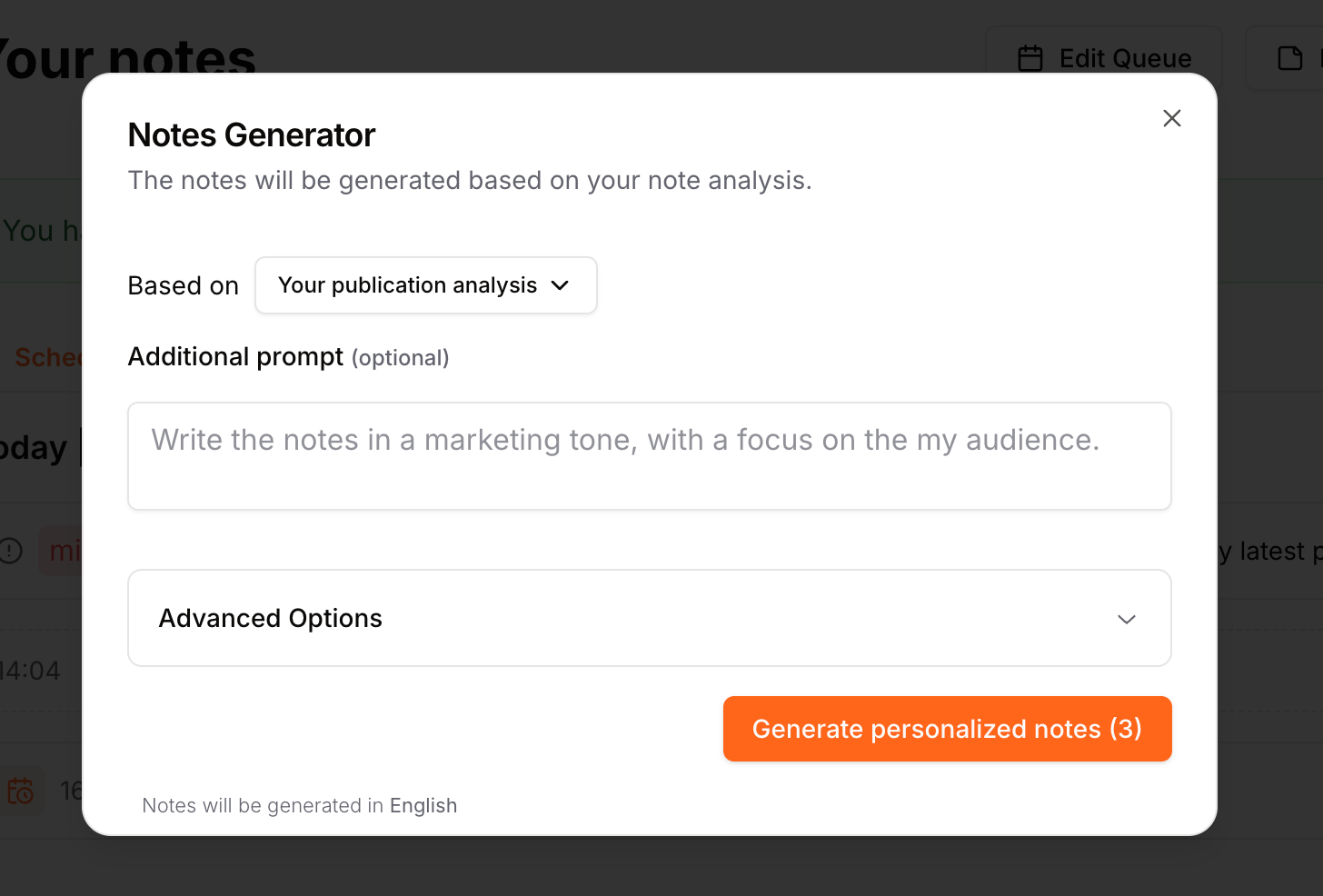
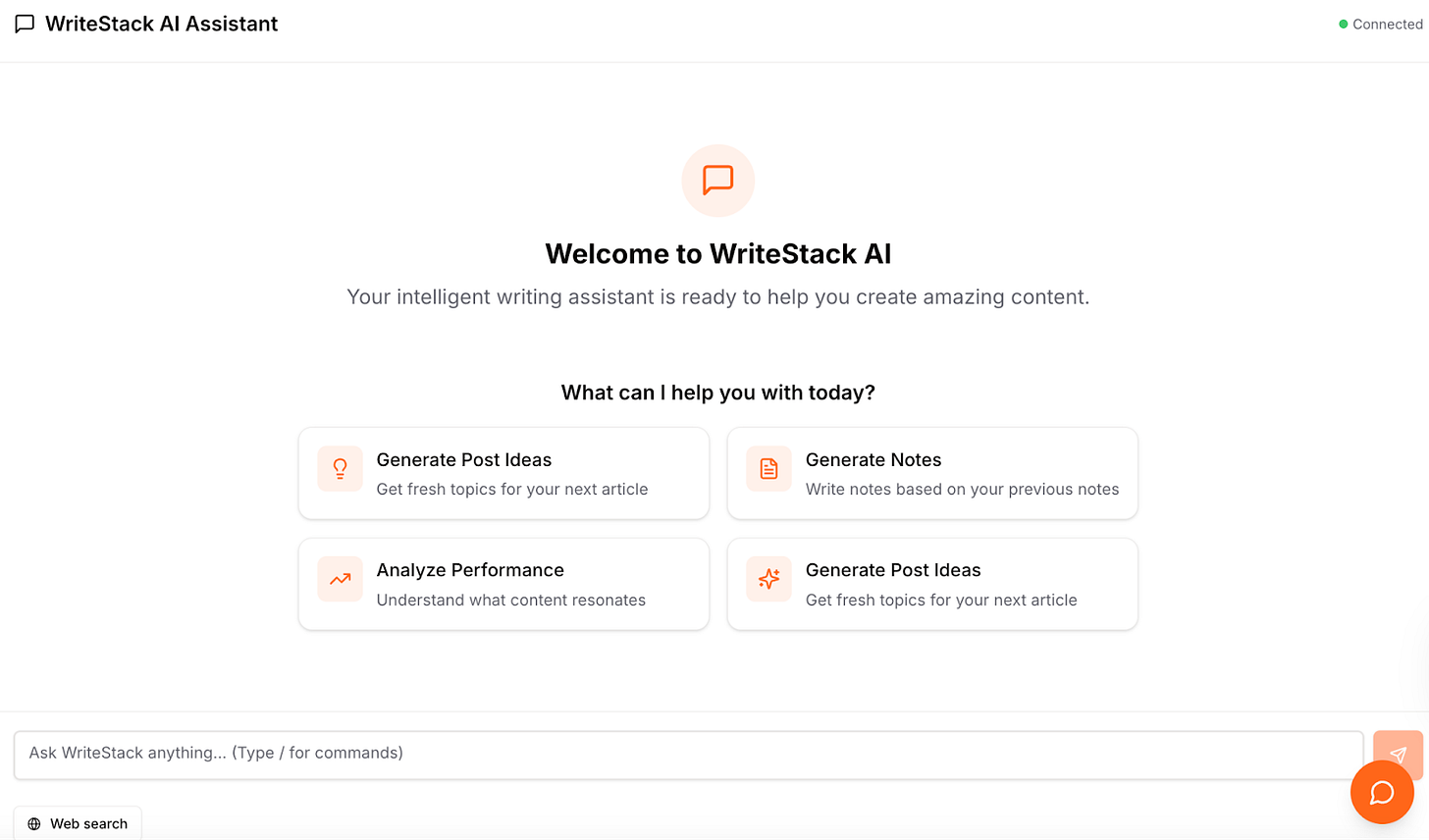
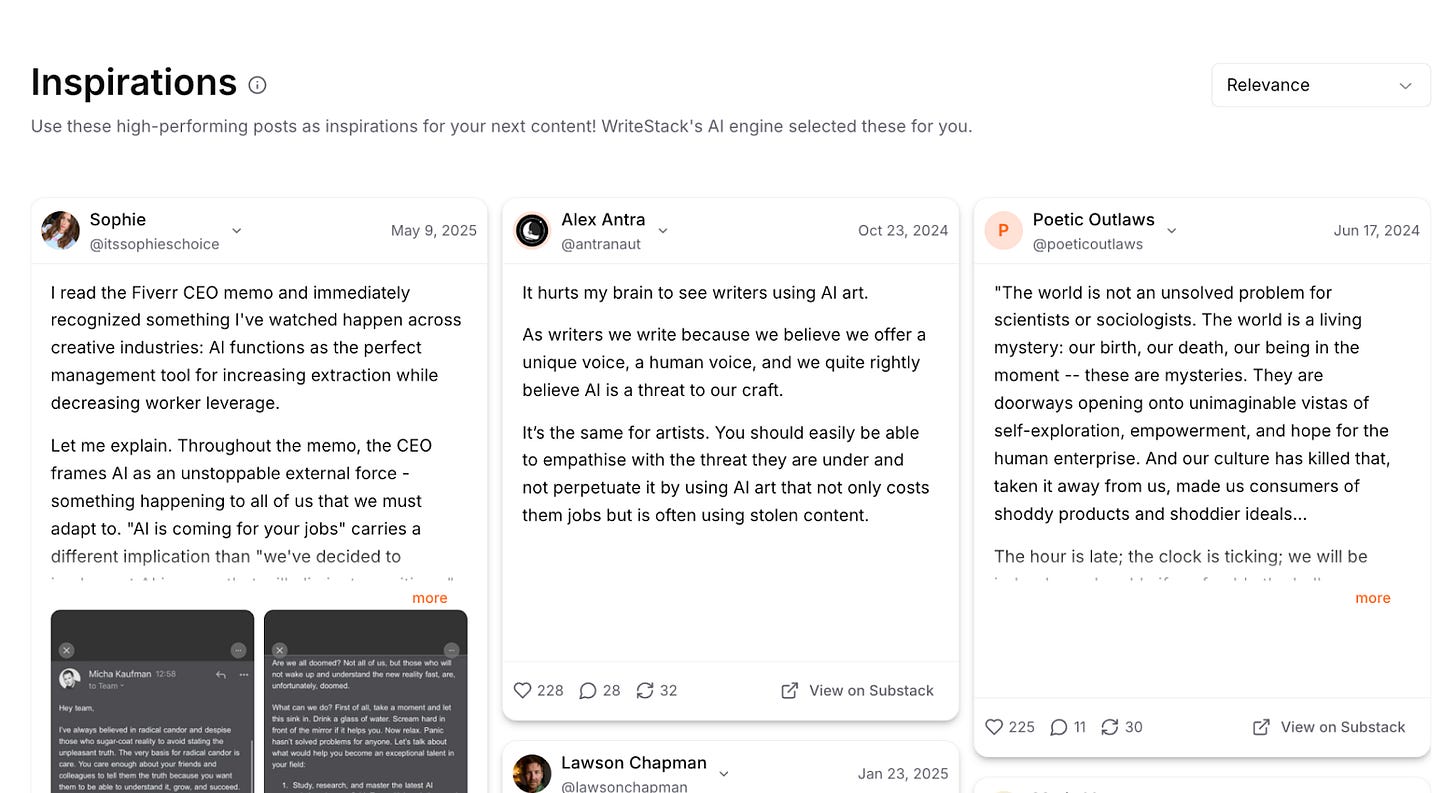

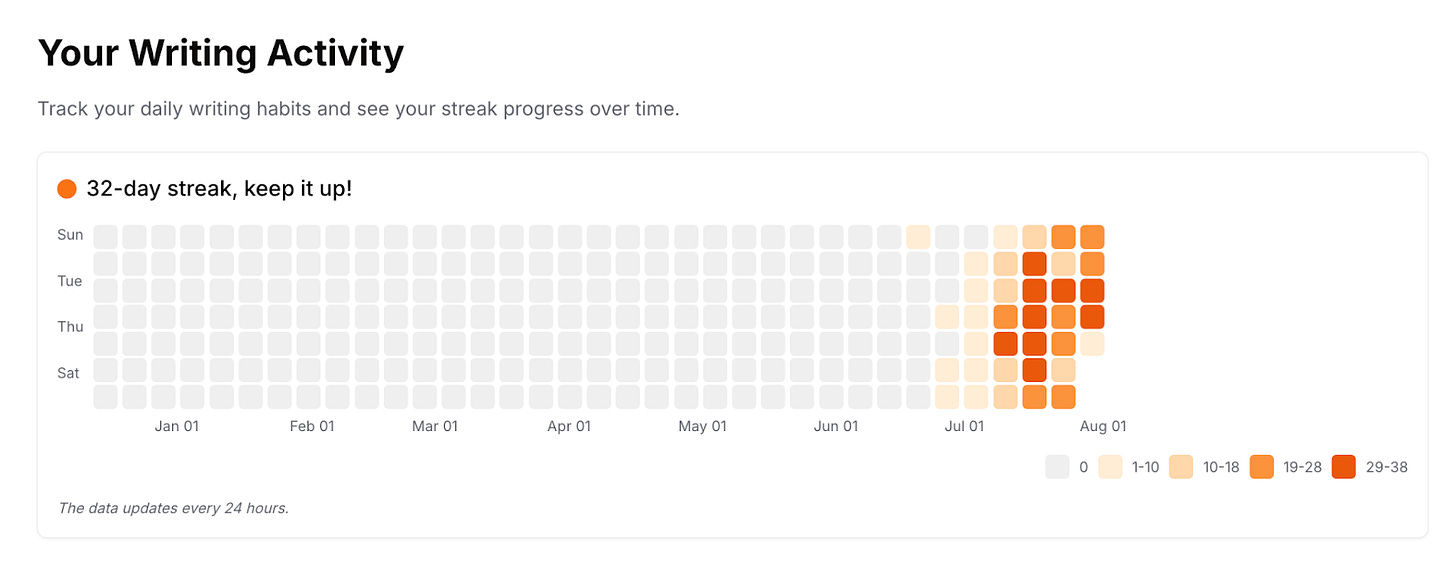

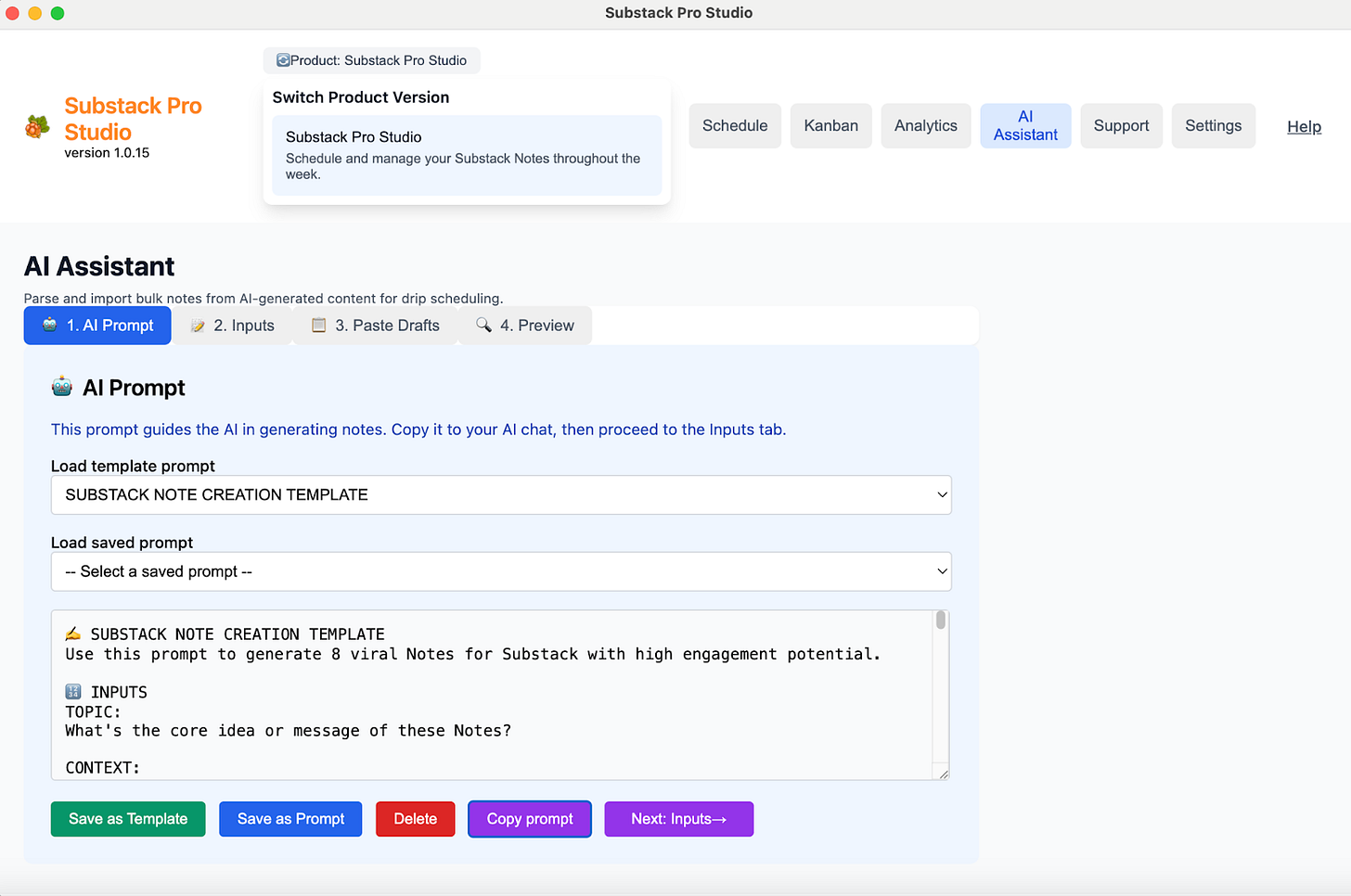
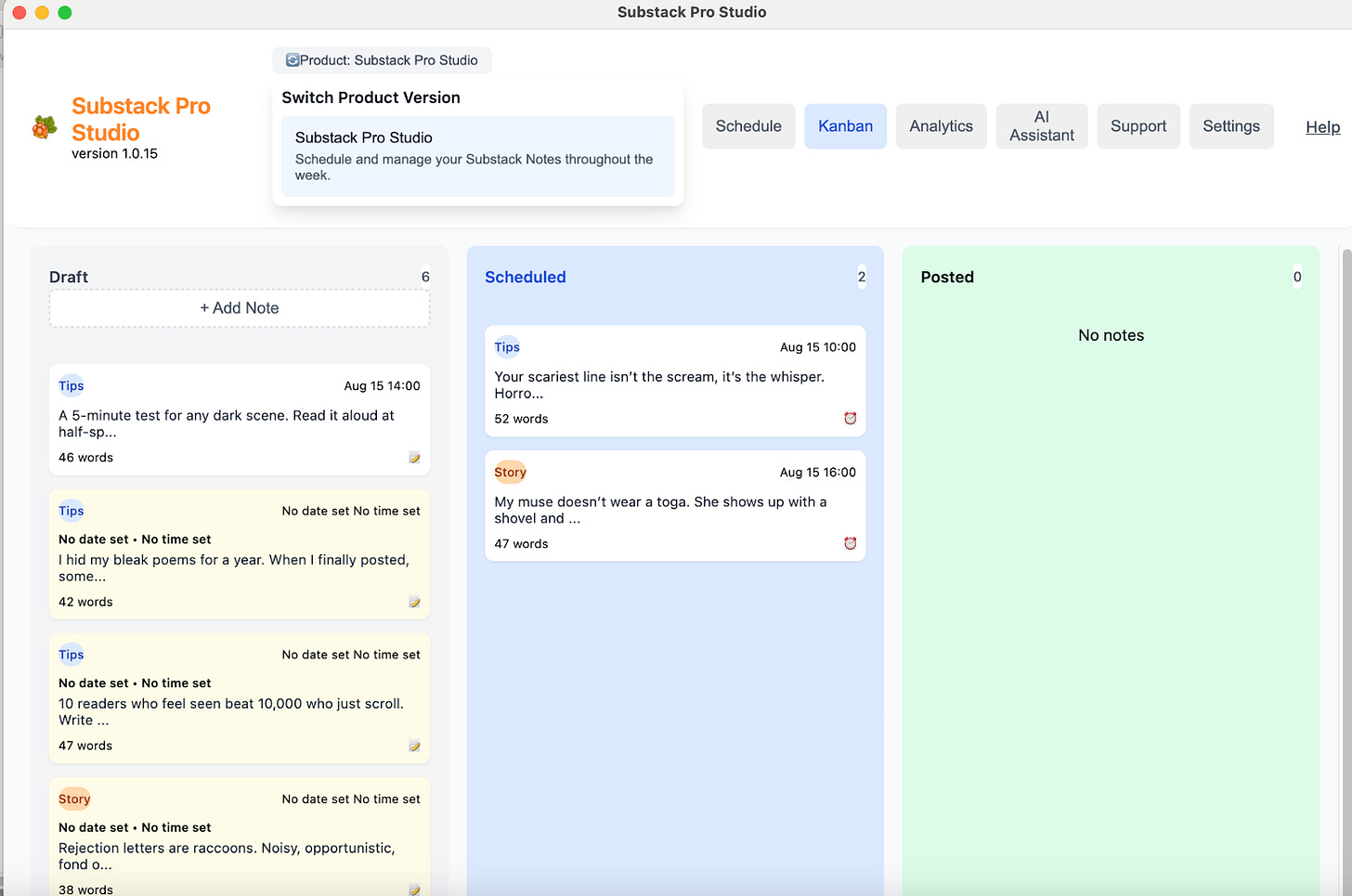
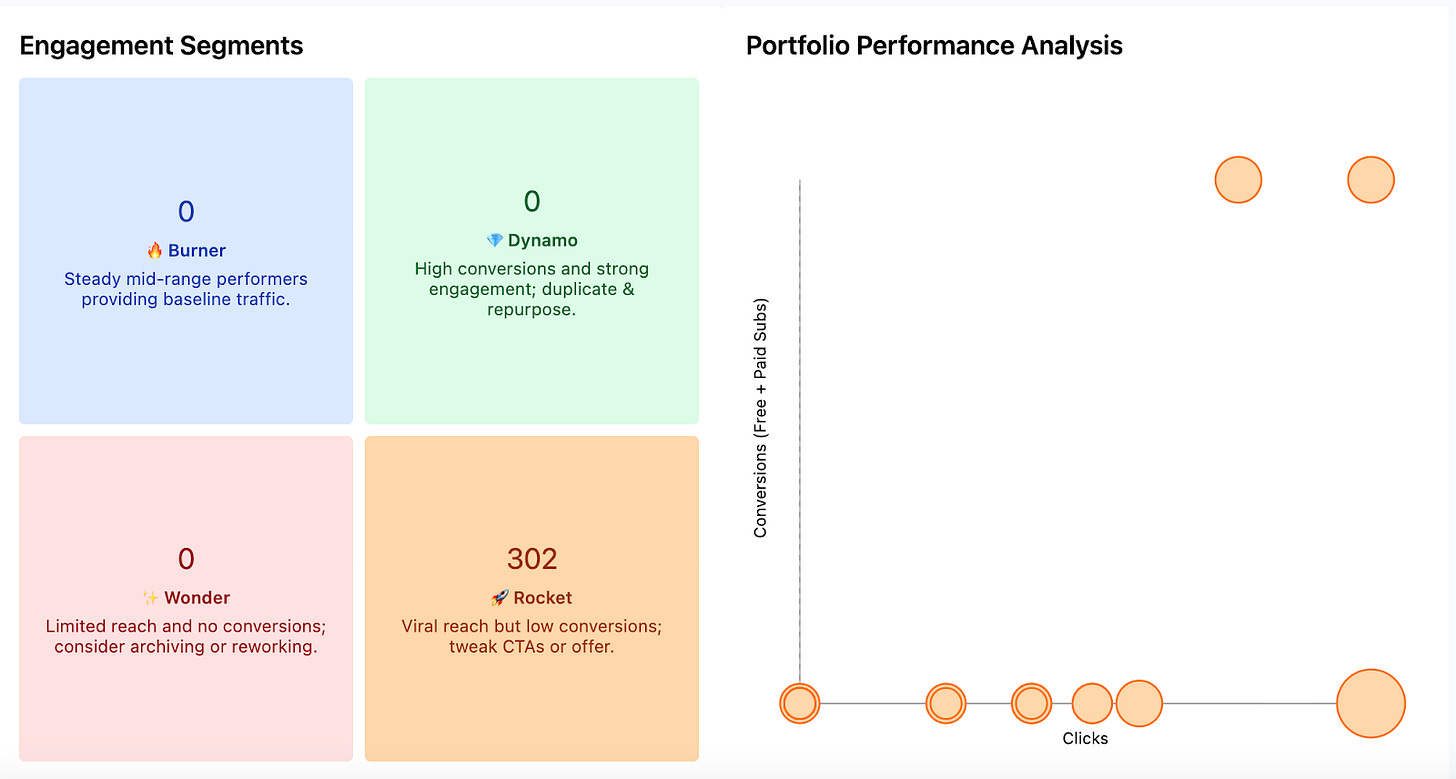
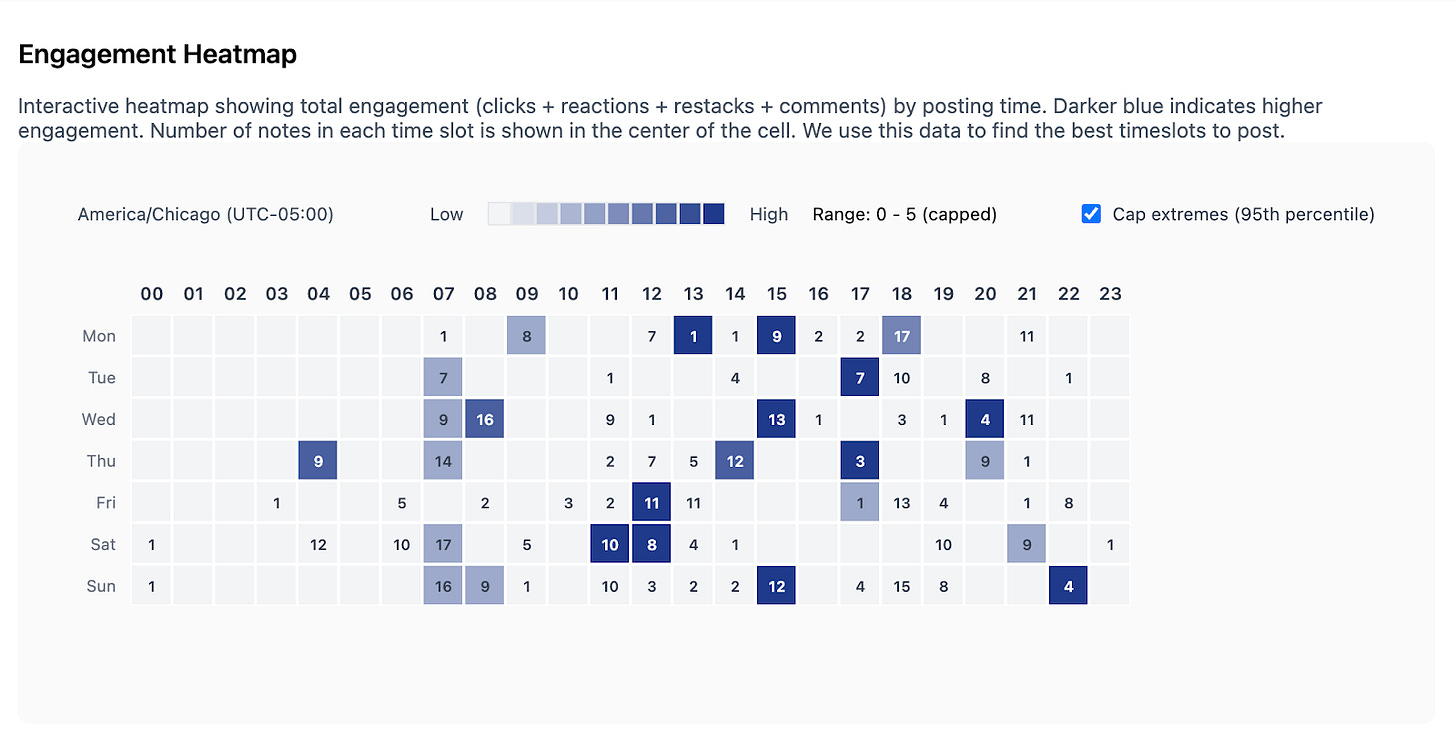

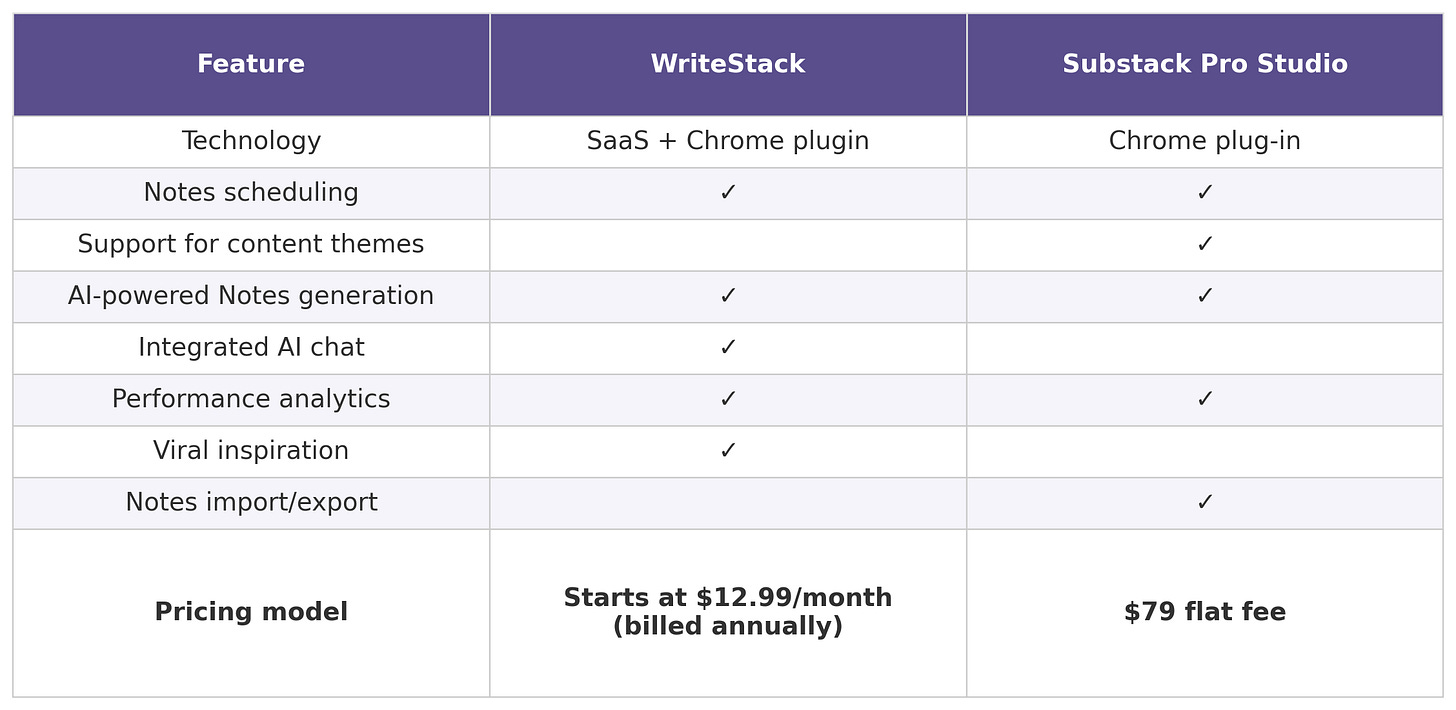
It takes away all the goals, perks, and excitement of being an actual WRITTER! Why would I need an AI to write notes for me? What about my readers? They want to read ME not a human (de)generated bot.
Very interesting article. I am trying to build something similar, more focused on data analysis than scheduling but it's interesting to see what people need. I started doing it for myself, I may or may not build a UI, but the mere existence of these tools means that I'm not crazy. I'm not buying the "it works for everyone" advice we find on Substack. People are experimenting and relying on their own data.